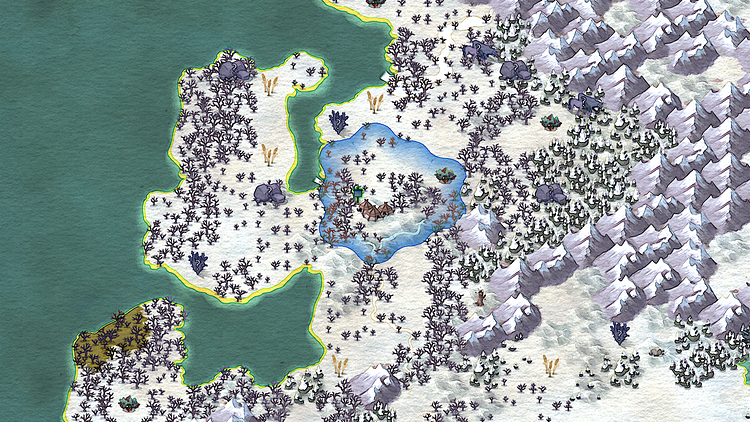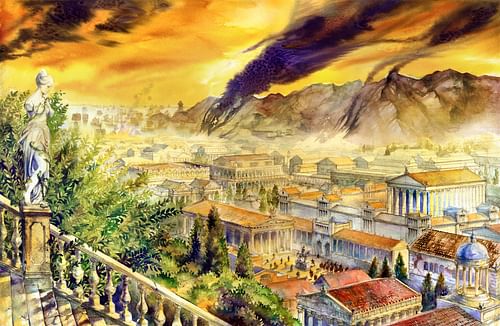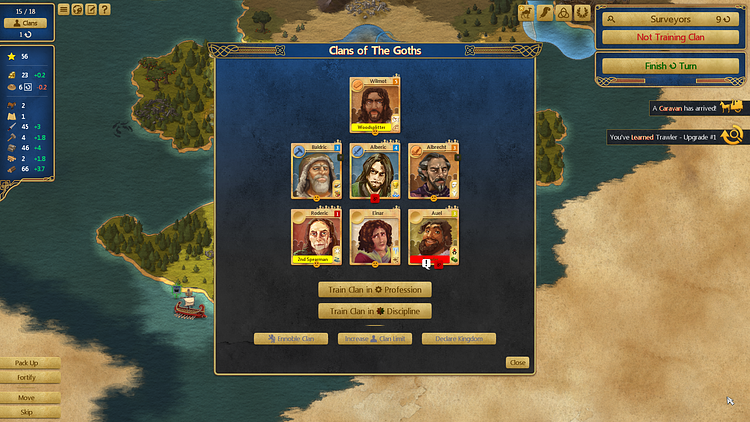Today we are talking to Jon Shafer, lead designer of the computer game At the Gates, now available on PC, Mac, and Linux. In this game, you control a Barbarian tribe during the Migration Age, helping them survive, grow, and hopefully bring down the Roman Empire. Or, in the words of the game's creator:
You are a Dark Age lord. Your destiny is to build a kingdom in the shadow of the crumbling Roman Empire. Explore the dangerous landscape around you, harvest its resources, and build a mighty economic and military machine. Your clans have their own personalities and desires, so carefully consider how you use them.
It won't be easy. Your path is unsure. Overcome your immensely strong neighbors. Outlast the frigid winters of the far north to discover a source of gold and vast riches.
Are you the leader who will usher in a new era of European history? Or will you be forgotten?
Jon started in the industry via Firaxis Games when he was 19 and became the lead designer for Civilization V when he was 21. He has since worked at Stardock and Paradox and founded Conifer Games in 2012. Here is what he told us about his exciting new game...
AHE: I believe the story of At the Gates started about seven years ago after you were lead designer on Civilization V (excellent game!). What made you want to create your own indie game?
JS: It came down to wanting complete freedom over what I was making. I really enjoyed working on Civilization, but after 6 years working on the series full-time and several more prior to that as part of the fan community I was ready to move on. Being your own boss is great! Not all the time, of course, as working alone from your house over several years catches up with you, but at the very least there was definitely nobody telling me how to make my game.
AHE: The setting of the Migration Age and the fall of the Roman Empire is not often seen in games, even though it is an exciting period of change where the European political landscape we know now was born. Why do you think games so rarely visit this period?
JS: When studying history we tend to focus on the winners. And while there is a certain curiosity as to how important historical polities unravel, it is less interesting for most than how those were born. Although this era saw the birth of medieval Europe, the 'barbarians' are obviously cast as the villains of the story. We see ourselves in Rome far more than we do in the Germanic tribes.
Furthermore, modeling the rise and expansion of a kingdom or empire is far easier than the decline. I made a conscious choice for the Romans to not be playable in At the Gates, which allowed me to focus the attention of the game elsewhere, but it would be very difficult for most designers to resist the temptation of making the Romans playable. Trying to make playing as a declining empire fun is a challenge few designers have managed to solve.
AHE: Interesting! So what made you choose the Migration Age as the period for your game?
JS: There were a few big factors.
First, I was listening to Mike Duncan's excellent History of Rome podcast, so I had the era on my mind when I was prototyping new game concepts back in late 2012.
Second, it is one of the few parts of western history that lends itself well to the 4X strategy genre, where the gameplay is defined by exploration and expansion from very humble beginnings. This is a perfect fit for the very beginning of civilization and also works really well with the colonization of the new world, and both of these subjects were made into 4X games by 1994. The Migration Age has never really been touched though, despite also being a pretty suitable launching point.
Third, at the time, I was really excited about the possibilities of cyclical map changes to spice up the traditional 4X gameplay formula. Focusing on this era allowed me to model a timescale where I could represent the effects of the seasons. In Civilization a single turn can be up to 50 years long, so having seasons would not make sense.
AHE: Your game includes clans and character management. This reminds me a bit of Crusader Kings II and the Total War series, as well as King of Dragon Pass. How does this play out in At the Gates?
JS: In At the Gates you spend most of your time managing your clans and resources, so it is pretty central to the game. Your clans are basically characters which you train in certain professions to get things done, such as exploring the map, waging war, or harvesting resources. Each clan also has two personality traits, which dictate what professions it is well suited for and how well they get along with other clans. The clans that join you are randomized, so who actually shows up can have a major effect on what gameplay strategies you will want to pursue.
AHE: Finally, one of the unique features in your game is an evolving map. Rivers freeze in winter, harvests occur in autumn, and your people can starve in winter. This sounds very exciting but also somewhat daunting. How did you manage to make this not overwhelming and strategically challenging at the same time?
JS: Many of the most basic professions in the game are centered around harvesting food for your tribe. It is easy to tell how much food you have left, as well as how far up winter is, so it is also pretty easy to stay on top of this as long as you prioritize it. If you do not, you will learn quickly enough! As the seasons change so do the graphics and ambient sound, as a constant reminder. It is certainly a different element to consider compared with most other strategy games, but you get used to it pretty quickly.

AHE: Are there any historical scenarios to play, or does the game always take place on a random map?
JS: I am working on a geographically accurate version of Europe, but that is not done quite yet, so right now all the maps are randomized. I would expect the cool Europe map to be done around this summer. We will also be providing a map editor so that members of the community can make their own maps as well.
AHE: As a final question, many of our readers might wonder how one goes about working in the games industry. Do you have any tips on how to get started with working on games?
JS: I am naturally biased since this is how I broke in, but I really think modding can offer a big head start. Game development companies want to hire people they know can actually help them make real games, and demonstrating you know how to use their own tools proves just that. Making your own game is also a great thing, but this is such a big task that getting your feet wet first with modding is probably the smarter approach. Games are complex and so it can take some time to build up skills and confidence, and the smaller the project the more likely you are to see it through to the end, which is what companies are looking for. Ambition is nice, but execution is even better.











